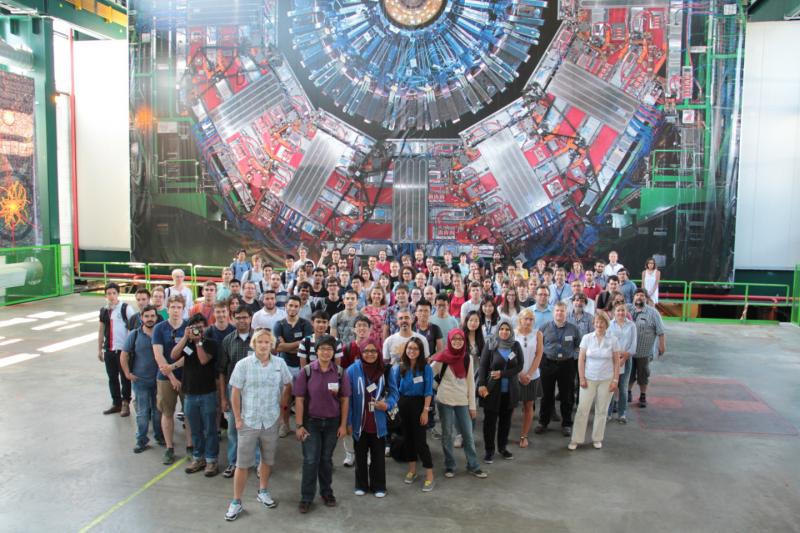
On 17th and 18th July CMS held its first "Induction Course for Newcomers". Stemming from an idea discussed by the CMS Management earlier in the year, the idea was to give newcomers an overview of the detector - including its history, operation and performance, and the steps required to produce published results. A principle objective was also to show how the collaboration "works" and where people fit-in in such a large organization. And of course no introduction to CMS would be complete without seeing the detector in reality, so the course included a visit to point 5 to explore both the underground and surface areas.
It would have been straightforward to give a comprehensive overview of each part of CMS, which could easily have filled a week of lectures, but it was felt that the course should be an overview, with pointers to resources of more information. The eventual plan was to divide the course into three half-day sessions:
- Introduction and overview of CMS Subsystems
- Visit to P5 + talks on Run/Technical Coordination & Safety
- From data-taking to analysis; Collaboration Board + Practicalities
The number of talks was minimized, whilst still retaining the essential content. For example, the talk on "Tracking" combined overviews of the inner trackers (strips and pixels) as well as the three muon systems (CSCs, DTs, RPCs) - which was certainly a challenge for the presenters! All talks and the visits were given by senior members of CMS, and ample time was reserved for questions and discussions after every talk. The full agenda can be found at: https://indico.cern.ch/event/317063
About 140 participants signed-up for this course - about double the anticipated number, which posed some logistical challenges for the lunch and visit to P5 that were handled with aplomb by the Technical Coordination team and the course organizers. According to the results of a survey conducted after the course, about half of the attendees were graduate students, with around 10% undergraduates and 20% summer students. The remainder were more experienced but still newcomers to CMS. The evaluation of the course is ongoing but the feedback is already encouraging, indicating that the level of the presentations was about right and the participants really appreciated the fact that the senior members of CMS were heavily involved in the course. There are, of course, some things that could be improved for future courses but it seems that everyone involved - both the participants and the presenters/guides - found this to be a very useful activity that should be repeated at regular intervals, possibly every ~6 months, close to CMS weeks at CERN.
A blog post by two of the participants can be found at: http://cern.ch/go/FbP6.
By Dave Barney
- Log in to post comments

